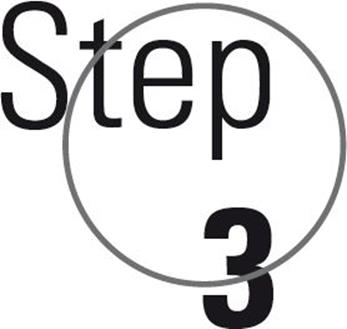Cracking the GRE Premium (2015)
Part IV How to Crack the Analytical Writing Section
Chapter 16 The Argument Essay
The Argument essay of the GRE asks you to examine and critique the logic of an argument. The arguments you will see in this chapter are similar to the ones you worked with earlier in the book and you will need to use the same approach to breaking these arguments down. This chapter will show you how to organize and write an essay once you’ve found the premises, conclusion, and assumptions of a GRE argument.
You’ll be able to use all the skills we’ve discussed for the Analysis of an Issue essays on this type of essay as well, but in a slightly different way. Instead of asking for your opinion on a topic, the Analysis of an Argument essay asks you to critique someone else’s argument. Before we jump into setting up templates and other preconstruction steps, let’s take a look at how Analytical Writing arguments work.
THE PARTS OF AN ARGUMENT
As seen in the Critical Reasoning portion in Chapter 6, an argument, for GRE purposes, is a short paragraph in which an author introduces a topic and uses reasoning or factual evidence to back up his or her opinion about that topic.
The following statement is a really simplified example of an argument:
My car broke down yesterday, and I need a car to get to work. Therefore, I should buy a new car.

The car argument above is composed of three parts:
· The conclusion—the author’s opinion and recommendation for action
· The premises—the facts the author uses to back up his or her opinion
· The assumptions—unstated conditions that must be true in order for the argument to make sense
In this argument, the author’s conclusion is “I should buy a new car.”
The premises the author uses to support this conclusion are that his car broke down yesterday, and that he needs a car to get to work.
The premises must support the conclusion the way table legs support a tabletop. The tabletop is the most obvious and useful part of a table—you see more of it, and you can put things on it. But without the legs to hold it up, it’s just a slab of wood on the floor. The same is true for the conclusion of an argument. The conclusion is the part that gets all the attention, since it recommends some course of action, but without the premises to support the conclusion, the conclusion won’t hold up.
Conclusion Words
Certain words indicate a conclusion:
· so
· therefore
· thus
· hence
· showed that
· clearly
· then
· consequently
· as a result
· concluded that
When you see these words, you can be relatively sure that you’ve found the conclusion of the argument.
Premise Words
Certain words indicate premises:
· because
· since
· if
· given that
· in view of
· in light of
· assume
ASSUMPTIONS
An assumption is an unstated premise that supports the author’s conclusion. It’s the connection between the stated premises and the conclusion. In the example of the table, the assumption is that nails or glue hold the legs and the tabletop together. Without the glue or nails, the table will fall apart. Without the assumption, the argument will fall apart.
Sometimes the assumption is described as the gap between the facts that make up the premises and the conclusion. They don’t always connect, so the assumption is the gap between them.
Let’s take a look back at the car argument:
My car broke down yesterday, and I need a car to get to work. Therefore, I should buy a new car.
The premises are that my car broke down yesterday and I need a car to get to work. The conclusion is that I should buy a new car.
When you first read this argument, you may have had some questions. These questions might have been along the lines of “Why can’t the author just rent a car?” or “Why can’t the author just fix the car?”
As you read an argument, identifying the premises and conclusion, questions may pop into your head. Those questions are pointing out the gap that leads to the assumption. Here, the gap is between having a broken car and still needing a car to get to work on the one side, and having to buy a new car on the other side.
Therefore, the assumption must be as follows:
There is no other way to have a car.
There are all sorts of smaller assumptions here—that the car can’t be fixed, that a car can’t be rented, that there’s no other car the author can borrow—but those are all covered in the main assumption.
The assumption fills the gap between the premises and the conclusion, and, in fact, functions as an unstated premise:
My car broke down yesterday, and I need a car to get to work. There is no other way to have a car. Therefore, I should buy a new car.
Brainstorming for the Argument Essay consists primarily of coming up with a list of assumptions.
Three Common Types of Arguments and Their Assumptions
There are three types of arguments you are likely to see. They are Sampling, Analogy, and Causal. Becoming familiar with these three types will help you identify the assumptions in the argument more quickly when the clock is ticking on the real test.

1. The Sampling Assumption
A sampling argument assumes that a small group is representative of a much larger group to which it belongs. To attack a sampling argument, show that one cannot assume that the opinions or experiences of the smaller group are not necessarily representative of the larger group.

2. The Analogy Assumption
An argument by analogy assumes that A = B or that what is true for one entity will be true for another. To attack an argument by analogy, simply show that the two groups or places or individuals are nothing like each other. What is true for one does not have to be true of the other.

3. The Causal Assumption
A causal argument assumes that A causes B, or that if you remove the cause, you will remove the effect. While there may be a strong correlation between A and B, it does not always follow that it is a causal relationship or that A is the cause of B. To attack a causal relationship, point out that there are other possible causes for B and brainstorm some possible examples.
Well, Great, But Why Do I Care?
You should care about taking apart the argument, and finding the assumptions in particular, because the key to writing a great Argument essay on the Analytical Writing section is ripping apart the argument.
Think about it. The official instructions on the test ask you to “critique” the author’s argument. However, if you claim that everything the author says makes sense, you won’t be able to write an essay that’s more than a few sentences long. This means that in order to write a great essay, you’ll need to tear the author’s argument apart.
Danger: The most common mistake people make in writing the Argument essay is expressing their own opinions. Don’t do this! The Issue essay specifically asks you to give an opinion and then back it up. The Argument essay wants a critique of someone else’s opinion, not your own.
WRITING THE ARGUMENT ESSAY
Writing the Analysis of an Argument essay requires a series of steps.
Step 1:
Read the topic and identify the conclusion and the premises.
Step 2:
Since they’re asking you to critique (i.e., weaken) the argument, concentrate on identifying its assumptions. Look for gaps in the argument, weaknesses in the logic, and new information in the conclusion that wasn’t present in the premises. Brainstorm as many different assumptions as you can think of. Write these out on your scratch paper or on the computer screen.
You will have 30 minutes
to plan and compose a
response to the argument
topic, so make sure to
budget your time wisely.
Step 3:
Select three or four of the strongest assumptions around which to build your essay.
Step 4:
Choose a template that allows you to attack the assumptions in an organized way.
Step 5:
Write the essay, using all the tools and techniques that you’ll be learning in this chapter.
Step 6:
Read over the essay and edit it.
WHAT THE READERS ARE LOOKING FOR
In the Analysis of an Argument topic section, your job is to critique the argument’s line of reasoning and the evidence supporting it and to suggest ways in which the argument could be strengthened. Again, you aren’t required to know any more about the subject than would any normal person—but you must be able to spot logical weaknesses. Make absolutely sure you have read and understood the previous section about taking apart the argument.
The essay readers will be looking for four things as they skim through your Analysis of an Argument essay at the speed of light. According to a booklet prepared by ETS, “An outstanding argument essay … clearly identifies and insightfully analyzes important features of the argument; develops ideas cogently, organizes them logically, and connects them smoothly with clear transitions; effectively supports the main points of the critique; and demonstrates superior control of language, including diction, syntactic variety, and the conventions of standard written English. There may be minor flaws.”
Your opinion is not the
point in an Analysis of an
Argument Essay.
To put it more simply, the readers will be looking for all the same things they were looking for in the Analysis of an Issue essay, plus one extra ingredient: a cursory knowledge of the rules of logic.
Doing the Actual Analysis of the Argument
In any Analytical Writing argument, the first thing you should do is separate the conclusion from the premises.
Let’s see how this works with an actual essay topic.
Topic:
The director of the International Health Foundation recently released this announcement:
“A new medical test that allows the early detection of a particular disease will prevent the deaths of people all over the world who would otherwise die from the disease. The test has been extremely effective in allowing doctors to diagnose the disease six months to a year before it would have been spotted by conventional means. As soon as we can institute this test as routine procedure in hospitals around the world, the death rate from this disease will plummet.”
Save the fancy prose for
English class! Your grader
cares more that you can
identify the parts of the
argument than for a clever
turn of phrase.
The conclusion in this argument comes in the first line:
A new medical test that allows the early detection of a particular disease will prevent the deaths of people all over the world who would otherwise die from that disease.
The premises are the evidence in support of this conclusion.
The test has been extremely effective in allowing doctors to diagnose the disease six months to a year before it would have been spotted by conventional means.
The assumptions are the unspoken premises of the argument—without which the argument would fall apart. Remember that assumptions are often causal, analogical, or statistical. What are some assumptions of this argument? Let’s brainstorm.
Brainstorming for Assumptions
You can often find assumptions by looking for a gap in the reasoning. “Medical tests allow early detection”: According to the conclusion, this medical test leads to the early detection of the disease. There doesn’t seem to be a gap here.
“Early detection allows patients to survive”: In turn, the early detection of the disease allows patients to survive the disease. Well, hold on a minute. Is this necessarily true?
· First, do we know that early detection will necessarily lead to survival? We don’t even know if this disease is curable. Early detection of an incurable disease is not going to help anyone survive it.
· Second, will the test be widely available and cheap enough for general use? If the test is expensive or available only in certain parts of the world, people will continue to die from the disease.
· Third, will doctors and patients interpret the tests correctly? The test may be fine, but if doctors misinterpret the results or if patients ignore the need for treatment, then the test will not save lives.
“Death rate will plummet”: There’s a huge gap here in that there’s absolutely no explanation of how merely detecting the disease will immediately cause the death rate from it to plummet. This area is ripe for exploration.
Organizing the Analysis of an Argument Essay
We’re now ready to put this into a ready-made template. In any Analysis of an Argument essay, the template structure should be pretty straightforward: You’re simply going to reiterate the argument, attack the argument in three different ways (each in a separate paragraph), summarize what you’ve said, and mention how the argument could be strengthened. From an organizational standpoint, this is pretty easy. Try to minimize your use of the word I. Your opinion is not the point in an Analysis of an Argument essay.
The arguments provided
for the writing assessment
of the GRE typically contain
more flaws than those
you worked with in the
multiple-choice section.
The flaws are often easier
to spot as well.
A Sample Template
Of course, you will want to develop your own template for the Analysis of an Argument essay, but to get you started, here’s one possible structure:
The argument that (restatement of the conclusion) is not entirely logically convincing, since it ignores certain crucial assumptions.
First, the argument assumes that ____________________
_____________________________________________________________.
Second, the argument never addresses ____________________
_____________________________________________________________.
Finally, the argument omits ____________________
_____________________________________________________________.
Thus, the argument is not completely sound. The evidence in support of the conclusion ___________________________.
Ultimately, the argument might have been strengthened by ________
_____________________________________________________________.
The key to succeeding on an Analysis of an Argument essay is to critique the argument clearly.
How Would the Result of Our Brainstorming Fit into the Template?
Here’s how the assumptions we came up with for this argument would fit into the template:
The argument that the new medical test will prevent deaths that would have occurred in the past is not entirely logically convincing since it ignores certain crucial assumptions.
First, the argument assumes that early detection of the disease will lead to an immediate drop in the mortality rate from this disease, yet it does nothing to explain how this will happen, and so on.
Second, the argument never addresses the point that the existence of this new test, even if totally effective, is not the same as the widespread use of the test, and so on.
Finally, even supposing the ability of early detection to save lives and the widespread use of the test, the argument still depends on the doctors’ correct interpretation of the test and the patients’ willingness to undergo treatment, and so on.
Thus, the argument is not completely sound. The evidence in support of the conclusion that the test will cause death rates to plummet does little to prove that conclusion, since it does not address the assumptions already raised. Ultimately, the argument might have been strengthened if the author could have shown that the disease responds to early treatment, which can be enacted immediately upon receipt of the test results, that the test will be widely available around the world, and that doctors and patients will make proper use of the test.
Customizing Your Analysis of an Argument Template
Your organizational structure may vary in some ways, but it will always include the following elements: The first paragraph should sum up the argument’s conclusion. The second, third, and fourth paragraphs will attack the argument and the supporting evidence. The last paragraph should summarize what you’ve said and state how the argument could be strengthened. Here are some alternate ways of organizing your essay:
Variation 1
1st paragraph: Restate the argument.
2nd paragraph: Discuss the link (or lack thereof) between the conclusion and the evidence presented in support of it.
3rd paragraph: Show three holes in the reasoning of the argument.
4th paragraph: Show how each of the three holes could be plugged up by explicitly stating the missing assumptions.
5th paragraph: Summarize and conclude that because of these three holes, the argument is weak.
Variation 2
1st paragraph: Restate the argument and say it has three flaws.
2nd paragraph: Point out a flaw and show how it could be plugged up by explicitly stating the missing assumption.
3rd paragraph: Point out a second flaw and show how it could be plugged up by explicitly stating the missing assumption.
4th paragraph: Point out a third flaw and show how it could be plugged up by explicitly stating the missing assumption.
5th paragraph: Summarize and conclude that because of these three flaws, the argument is weak.
You Are Ready to Write an Argument Essay
You’ve separated the conclusion from the premises. You’ve brainstormed for the gaps that weaken the argument. You’ve noted how the premises support (or don’t support) the conclusion. Now it’s time to write your essay. Start typing, indenting each of the four or five paragraphs. Use all the tools you’ve learned in this chapter. Remember to keep an eye on the time. Again, if you have a minute at the end, read over your essay and do any editing that’s necessary.
What To Do with Your Time
Now that you know how to construct your essay, you have to practice writing essays in a mere 30 minutes. Here’s a guideline for how to use your time:
· Break down the argument: 3–4 minutes
· Find 2–3 assumptions: 3–4 minutes
· Write the essay: 18–20 minutes
· Proofread: 1–2 minutes
Notice that not a lot of time is allotted for proofreading. Remember that it’s okay to have minor spelling and grammatical errors. Your time is better spent making sure you consider both sides of the issue completely and write an effective essay.
Practice: Writing an Argument Essay
Practice on the following sample argument topic. If you have access to a computer, turn it on and start up a word-processing program (again, you may want to use a very rudimentary one like Notepad to simulate the ETS program you’ll see on the real test). Then set a timer for 30 minutes. In that time, read the topic, brainstorm in the space provided in this book, and then type your essay into the computer.
When writing your essay,
make sure to use terms
like causal, analogy,
sampling, and so forth.
Nothing impresses an
ETS grader more than a
sentence like “The
argument assumes the
sample is representative.”
A Sample Argument
The market for the luxury-goods industry is on the decline. Recent reports show that a higher unemployment rate, coupled with consumer fears, has decreased the amount of money the average household spends on both essential and nonessential items, but especially on nonessential items. Since luxury goods are, by nature, nonessential, this market will be the first to decrease in the present economic climate, and luxury retailers should refocus their attention to lower-priced markets.
Conclusion:
Why? (premises)
Assumptions:
Ways you can pull the argument apart:
Ways the argument could be made more compelling:
Now use the template you developed earlier in this chapter to type your essay on a computer.
How to Score Your Essay
It’s time to put on your essay-scoring hat and prepare to grade your own essay. (Again, if you’re lucky enough to have a friend who is also preparing for the GRE, you could switch essays.) You’ll need to be objective about the process. The only way to improve is to honestly assess your weaknesses and systematically eliminate them.
Set a timer for 2 minutes. Read the essay carefully but quickly, so that you do not exceed the 2 minutes on the timer.
Now ask yourself the following questions about the essay:
1. Overall, did it make sense?
2. Did you address the argument directly?
3. Did you critique the argument thoroughly?
4. Did your introduction paragraph repeat the argument to establish the topic of the essay?
5. Did you avoid injecting your own opinion into the essay?
6. Did your essay have three strong paragraphs critiquing the arguments?
7. Did your critiques make sense?
8. Did you flesh out your points to make the weaknesses of the argument explicit?
9. Did the examples apply directly to the topic?
10.Did the essay have a strong conclusion paragraph?
11.Was the essay well organized?
12.Did you use language that made the organization of the essay obvious?
13.Did you use correct grammar, spelling, and language, for the most part?
14.Was the essay of an appropriate length (four to five paragraphs of at least three sentences each)?
If you could answer “yes” to all or almost all of those questions, congratulations! Your essay would probably receive a score in the 5–6 range. If you continue to practice, and write an essay of similar quality on the Analysis of an Argument essay on the real test, you should score very well.
If you answered “yes” to fewer than 12 of the questions, you have room for improvement. Fortunately, you also know which areas you need to strengthen as you continue to practice.
If you answered “yes” to fewer than 5 of the questions, your essay would probably not score very well on a real GRE. You need to continue to practice, focusing on the areas of weakness that you discovered during this scoring process.
There are more Argument topics for you to practice in the back of this book, but if you’d like to practice even more, go to www.gre.org and view the list of real Argument topics. You cannot possibly practice writing essays on all of these real ETS topics, so don’t even try. However, you should spend time reading through them to become familiar with the variety of topics that ETS may give you.
Just Keep Practicing
So now you’ve read everything you need to know about writing high-scoring essays on the GRE. With a little practice, writing these essays should become second nature, and you’ll find yourself sitting at the word processor on test day confident and prepared. Keep it up!
Summary
· Always start by identifying the conclusion of the argument.
· Look for the common types of arguments: Sampling, Analogy, and Causal.
· Brainstorm all of the assumptions that attach the premises to the conclusion.
· Outline your essay on your scratch paper before you start writing.
· Leave yourself 2 minutes to proofread your essay once you are done writing.